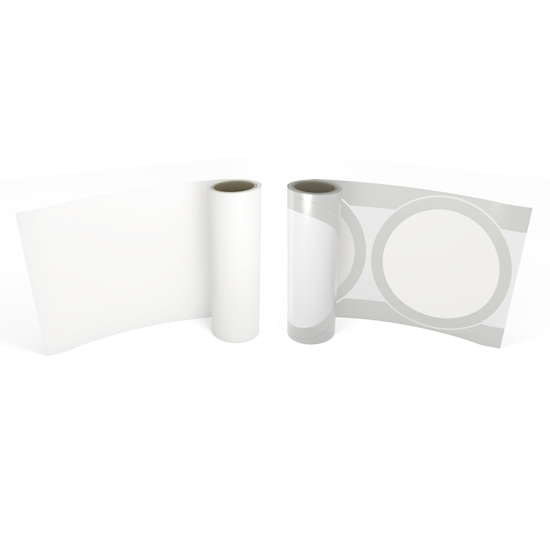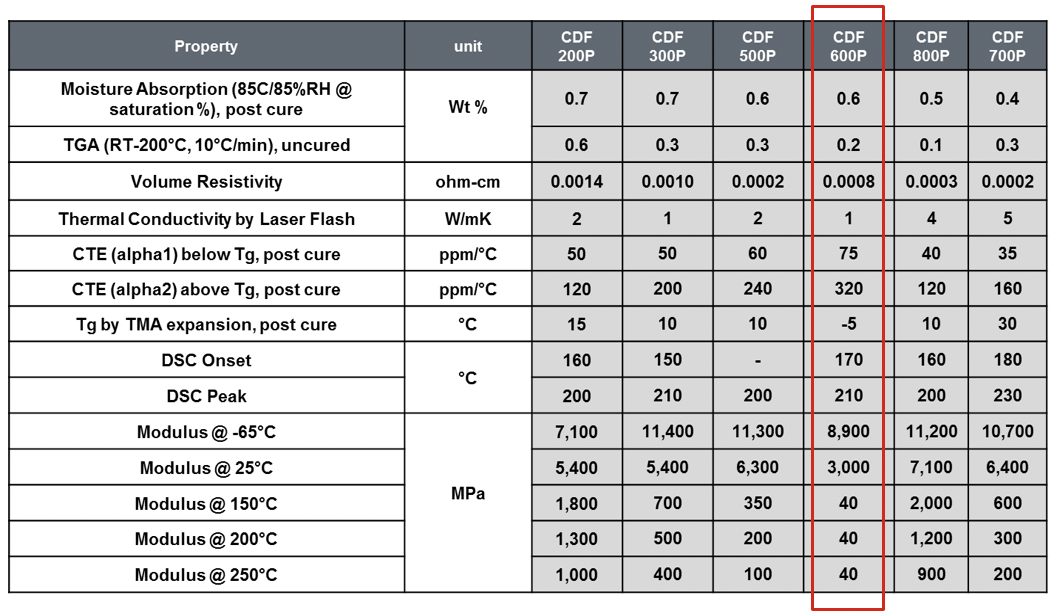LOCTITE ABLESTIK CDF 530P
Harmonization Code : 7115.90.00.00 | Other articles of precious metal or of metal clad with precious metal : Other
Main features
- Electrically conductive
- Thermally conductive
- QFN, TQFP, eTQFP
Product Description
LOCTITE ABLESTIK CDF 530P, highly filled, conductive die attach adhesive is designed to provide high thermal and electrical conductivity in the attachment of integrated circuits and components onto metal leadframes. This adhesive exhibits strong adhesion to various wafer metallizations and leadframe finishes. It can be used in a variety of die sizes ranging from 3mm x 3mm to 8mm x 8mm .
LOCTITE ABLESTIK CDF 530P offers high MSL reliability, controlled fillet size and does not exhibit resin bleed out. It has good wetting and low warpage on large dies and is recommended for thin wafer handling applications. It comes in 15 (CDF 515P) and 30um and is typically used for QFN, TQFP and eTQFP package applications.
Cure Schedule
- 30 minute ramp from 25°C to 200°C, hold 60 minutes @ 200°C
- 30 minute ramp from 25°C to 175°C, hold 60 minutes @ 175°C
Technical Specifications
| Thermal Properties | |
| Glass Transition Temperature (Tg) Glass Transition Temperature (Tg) The glass transition temperature for organic adhesives is a temperature region where the polymers change from glassy and brittle to soft and rubbery. Increasing the temperature further continues the softening process as the viscosity drops too. Temperatures between the glass transition temperature and below the decomposition point of the adhesive are the best region for bonding. The glass-transition temperature Tg of a material characterizes the range of temperatures over which this glass transition occurs. | 5 °C |
| Thermal Conductivity Thermal Conductivity Thermal conductivity describes the ability of a material to conduct heat. It is required by power packages in order to dissipate heat and maintain stable electrical performance. Thermal conductivity units are [W/(m K)] in the SI system and [Btu/(hr ft °F)] in the Imperial system. | 1.8 W/m.K |
| Electrical Properties | |
| Volume Resistivity Volume Resistivity Volume resistivity, also called volume resistance, bulk resistance or bulk resistivity is a thickness dependent measurement of the resistivity of a material perpendicular to the plane of the surface. | 4.0x10-4 Ohms⋅cm |
| General Properties | |
| Film Thickness Film Thickness Film thickness is the thickness of a backing film without taking into account any coatings or adhesive layers. It is measured in micron and the conversion factor to mil is 0.039. | 30 µm |
| Work life @25°C Work life @25°C Work life is the amount of time we have to work with a material until it is no longer able to be easily worked and applied on a substrate. It is based on the change in viscosity and it can rely on the application requirements. | 2160 hours |




